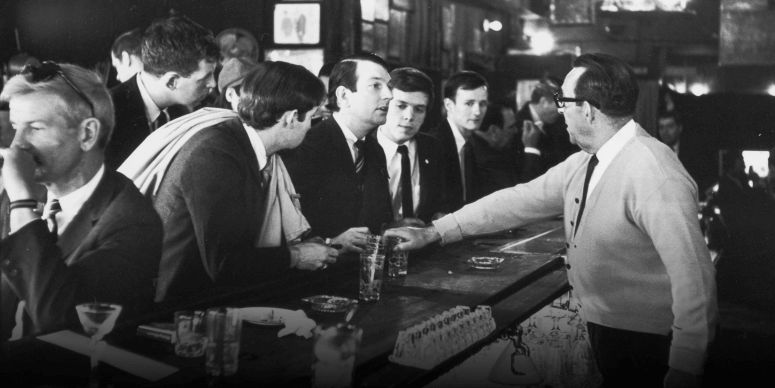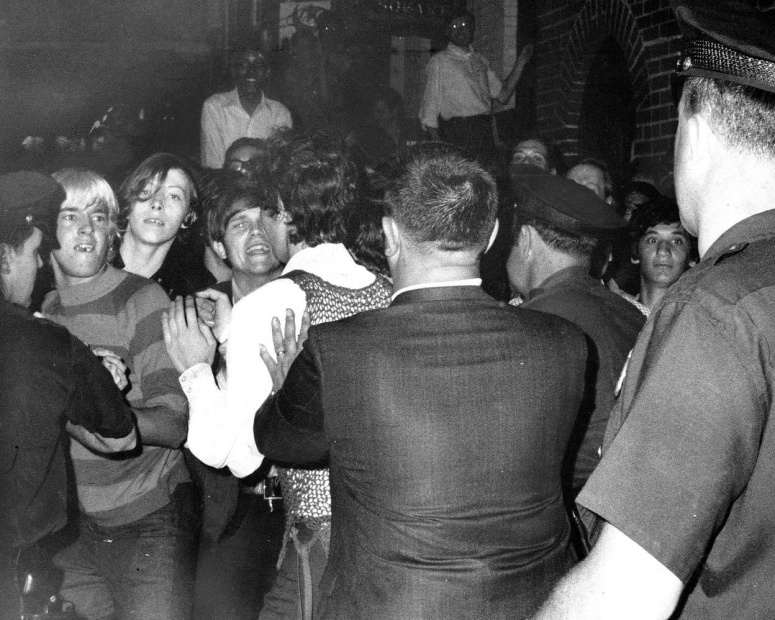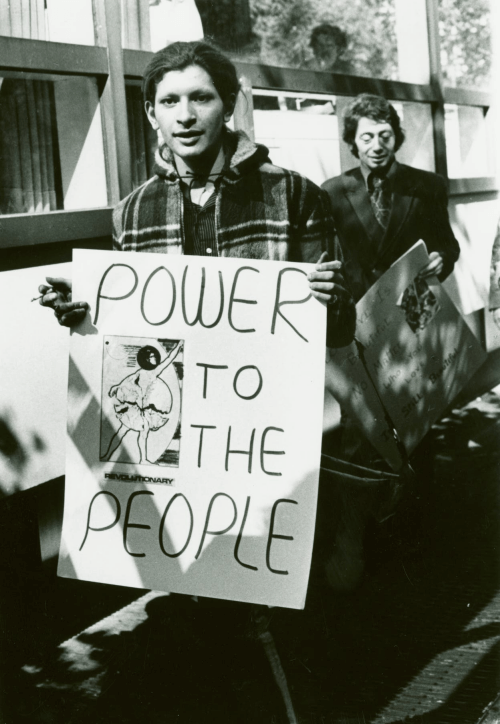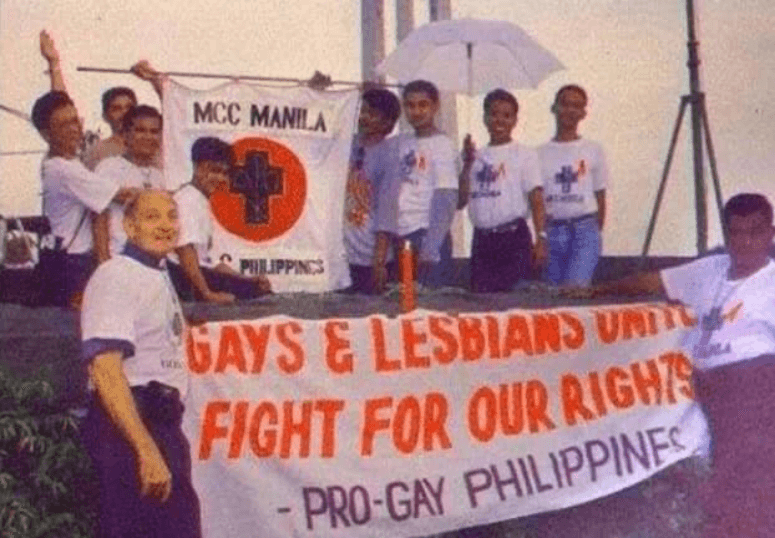Pride Month 101: From US gay rights history to PH precolonial 'gender-crossing'
June not only marks tag-ulan in the Philippines but also Pride Month, when there's a torrential downpour of love and bliss for the LGBTQIA+ community worldwide.
The period is marked with gaieties, glamorous outfits, vibrant floats, chirpy music, spillage of rainbow hues, and all that jazz.
Despite the merriment that comes with Pride Month, it is important to remember its sociopolitical roots and how it has always been an act of revolution first and celebration second.
Gay and lesbian organizations
Everything can be traced to the early 1900s when individuals from North America and Europe created gay and lesbian organizations like Society for Human Rights, according to the History network's website.
After World War II, the Mattachine Society and the Daughters of Bilitis published gay- and lesbian-positive newsletters even as they were vocal in demanding recognition for gays and lesbians—and protesting discrimination against them.
'Sip-In'
Among the precursors of Pride Month was the "Sip-In" incident in 1966, when three men from the Mattachine Society went to Julius, a bar in New York City, and asked for drinks after announcing they were gay.
Gay and lesbian people were not allowed to be served in bars at the time because they were considered to be a threat to public order. Bars that fail to obey are at risk of having their liquor license revoked, inasmuch as they're also often the subject of police raids.
After the Julius bartender promptly refused to serve the three men, they achieved their goal and—with the support of the American Civil Liberty Union—were able to move with action against the State Liquor Authority for the discriminatory law.

The "Sip-In" was covered by the media, including the New York Times whose story had the memorable headline, “3 Deviates Invite Exclusion by Bars.”
The State Liquor Authority, according to History, denied the discrimination claim, saying it was the bartenders who decide whether they'll serve customers.
The Commission on Human Rights soon got involved, saying homosexuals had the right to be served in bars. Eventually, the State Liquor Authority's policy no longer viewed homosexuals as “disorderly," and gay patrons were finally able to enjoy a freedom they once didn't have.
Stonewall Riots
In any case, the community was still denied basic civil rights. There's still oppression in society, inasmuch as police raids still took place.
On the fateful night of June 28, 1969, the New York Police Department raided the Stonewall Inn, a bar on Christopher Street in the Greenwich Village neighborhood of Manhattan known for its cheap prices, allowing dancing, and welcoming drag queens and homeless youths. The police aggressively dragged out Stonewall patrons and bar employees, but they fought back and found allies in angry residents, who gathered in the streets to protest.

In what would be known as the Stonewall Riots, protests stretched to six days that were filled with violent clashes outside the Stonewall Inn and throughout Manhattan.
The riots ended on July 2, 1969, and would make the headlines worldwide, bringing much-needed attention to gay rights movements that were largely ignored by the American government and media.

Historian John D'Emilio told History that the Stonewall Riots may not have happened if the gay community hadn’t reaped the benefits of the Sip-In years prior.
First Gay Pride Parade
In 1970, thousands of activists marched through Manhattan to commemorate the Stonewall Riots anniversary and called it the "Christopher Street Liberation March."
“Say it loud, gay is proud" became the parade’s official chant, according to History.
In June of that year, other marches and parades also took place in Chicago, Los Angeles and San Francisco.
Eventually, the Christopher Street Liberation March became known as Gay Pride Parade.

Craig Schoonmaker, who authored the word "pride" in the celebration, said he first thought of using the word "power" but decided against it since there’s "very little chance for people in the world to have power."
"People did not have power then; even now, we only have some," Schoonmaker is quoted as saying. "But anyone can have pride in themselves, and that would make them happier as people, and produce the movement likely to produce change.”
From Pride Parade to Pride Month
Pride events started taking place in many parts of the world in the coming years, eventually evolving into a month-long celebration.
In June 2000, President Bill Clinton officially designated June as Gay and Lesbian Pride Month.
President Barack Obama in 2009, meanwhile renamed the celebration to a more inclusive Lesbian, Gay, Bisexual, and Transgender Pride Month. In 2016, Obama also ordered the creation of the Stonewall National Monument.
To date, Pride Month events around the world, including in São Paolo in Brazil, Sydney in Australia, Madrid in Spain, Taipei in Taiwan, and Toronto in Canada, amassing up to five million attendees.
Pride March in the Philippines
The Philippines, a predominantly Catholic country with a generally conservative upbringing, has two dates in question regarding its very first Pride March.
One was in 1994, which was organized by the Progressive Organization of Gays and the Metropolitan Community Church and was held in Quezon City. The event only saw some 50 attendees marching from Quezon Boulevard to the Quezon Memorial Circle. It's also the first Pride March in Asia at that.
Another took place in 1996, which was larger in scale as a Lesbian and Gay Pride March.

But as early as the '70s, there were already initiatives to make the country's LGBT community accepted into society.
In 1975, renowned columnist, politician, and LGBTQ activist Justo Justo established the Home for the Golden Gays, a retirement home for gays mostly aged 60 and up. One of the prominent "lolas" there was Walter Dempster Jr., more popularly known as Walterina Markova.
In the '80s, the Women's Movement already worked on addressing the Filipino lesbian struggle and in 1992, the country's inaugural lesbian organization The Lesbian Collective was established.
Precolonial era 'gender-crossing'
But even ahead of the existence of the LGBTQIA+ label itself, much less the Pride March or Pride Month for that matter, the country's precolonial Spanish era already saw "gender-crossers" (not to be confused with cross-dressers).
In the essay of University of the Philippines professor J. Neil Garcia titled "Male Homosexuality in the Philippines: a short history," Garcia says before the Spaniards came to the Philippines, there were men who were practicing transvestism, crossing male and female gender lines and possessing a "significant" role in society.
Known as babaylan or catalonan in their native communities, they serve as religious functionaries and shamans, intermediaries between the visible and invisible worlds to whom even the datu deferred.
"They placated angry spirits, foretold the future, healed infirmities, and even reconciled warring couples and tribes," Garcia writes.
He notes that these men—who's also called bayoguin, bayok, agi-ngin, asog, bido, and binabae—not only assumed the outward appearance and demeanor of women but were granted social and symbolic recognition as "somewhat women." They're comparable to women in every way, except that they could not bear children.
For Garcia, cross-dressing, effeminacy, and gender transitive behavior "never really disappeared in Philippine society."
Pride Festival 2023
This year, the country is holding a Pride Festival on June 24 at the Quezon Memorial Circle with the theme Love, Laban: A Celebration of the Fight for Love in All Forms and Ways. It is organized by Pride PH, one of the broadest networks of LGBTQIA+ individuals and organizations in the country.
The day-long event will include three major activities: Pride Expo, Pride March, and Pride Night.
At the Pride Expo starting at 10 a.m., LGBTQIA+ merchants and businesses will be selling food and merchandise around the venue. Free services, including HIV testing and mental health consultations, are also offered.
The Pride March, meanwhile, will begin at 3 p.m.
The event culminates with Pride Night at 6 p.m., which will feature performances, "lots of dancing," and a fireworks display.


